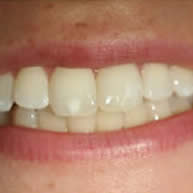Gum disease is the inflammation and infection of the gums and the tissue. Generally caused by bacterial plaque, it is the major cause of adult tooth loss. Left untreated, bacterial plaque will harden to tartar. Tartar is a rough, porous mineral buildup that is usually yellow or brown in color. Tartar forms at and underneath the gum line, and because it is porous, it absorbs stains. Tartar excretes the toxins that cause gum inflammation, resulting in the development of periodontal pockets that hold even more toxins and bacteria. This condition can leads to the loosening of the teeth, or even the teeth falling out. And as the condition worsens, the accumulated toxins and bacteria move deeper into the jaw to destroy the bone that holds the tooth in place.
Signs of gum disease can include:
- Red, inflamed gums
- Bleeding while brushing or flossing
- Receding gums
- Loose or separating teeth
- Presence of pus between the gum and tooth
- Chronic halitosis
Periodontics is the focus in the treatment of gum disease. Gum disease is reversible if caught while in the early stages. The dentist will scale the tooth to remove plaque and calculus, and plane the tooth roots to smooth them. The dentist may prescribe antibiotics to clear up any infection or inflammation. Advanced cases may require the dentist to surgically trim the gums, remove the hardened plaque build-up, and re-contour the damaged bone.





